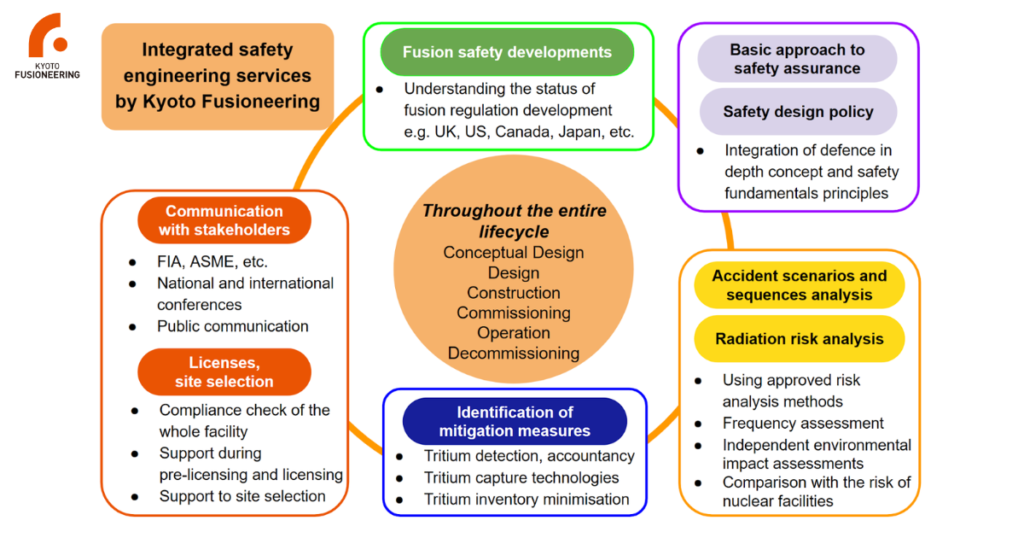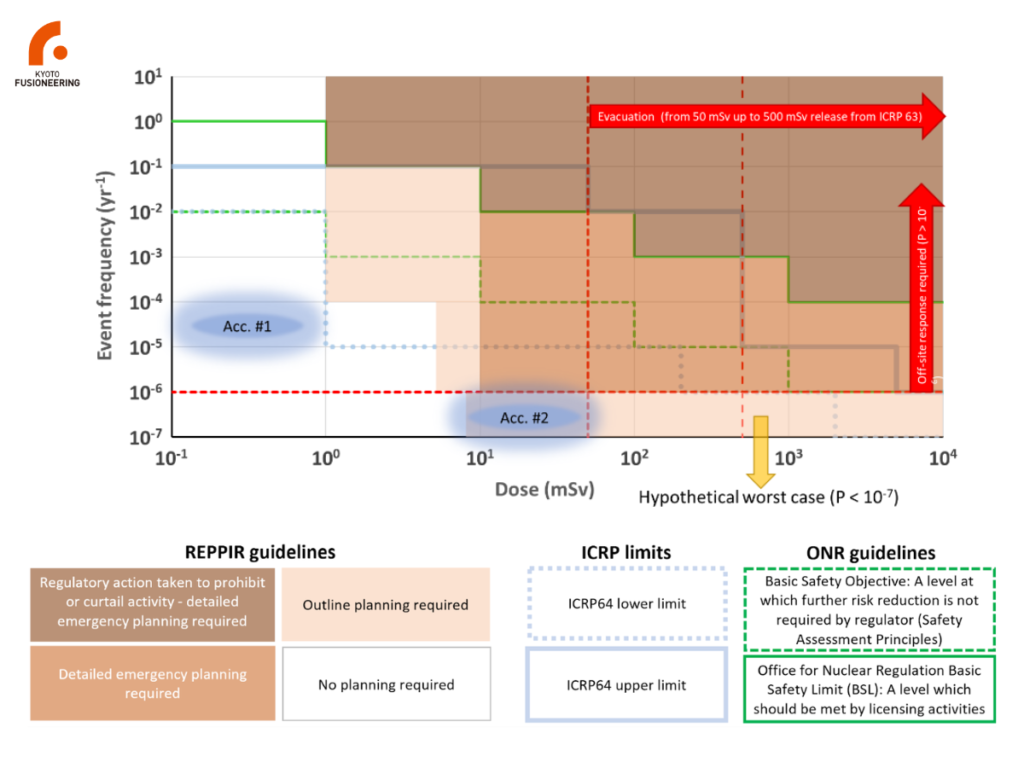Safety Engineering Services
Fusion power plants use tritium as fuel in a process that does not produce the same types and amounts of radioactive wastes as fission, which in contrast uses heavy radioactive isotopes and creates significant amounts of long-lived radioactive wastes. Still, some amount of radioactive material will be generated and kept on site at fusion power plants, due to the use of tritium and the irradiation of reactor components. Fusion facilities have been developed and operated around the world for decades, so the potential hazards associated with a fusion power plant are reasonably well understood. These include conventional, radiological and nuclear safety hazards, potential accident scenarios and associated impact doses, the types and quantities of radioactive waste, and any potential radioactive discharge to the environment surrounding the fusion power plant. However, fusion power plant concepts continue to evolve, and there remains some uncertainty about the exact inventory of radioactive materials that will be contained within a future fusion power plant. It is for these reasons that the hazards associated with fusion power plants must be further investigated.
Kyoto Fusioneering has established a team of safety experts covering a range of safety-related issues, who can draw on past experience working on aspects of both fission and fusion safety, while also possessing a strong understanding of the most advanced fusion power plant concepts. This allows the team to provide integrated safety engineering services throughout the entire lifecycle of a fusion power plant, as illustrated in Figure 1.

Risk Matrix Case Study
In 2021, the UK Government launched its fusion energy strategy, which clearly stated that proportionate and effective regulation would be a key enabler for the UK’s fusion strategy[1]. A public consultation on the UK Government’s proposals for a fusion regulatory framework followed, and concluded that “…we remain confident that existing regulations in the UK will be able to uphold safety standards in a proportionate way”[2]. The justification for this approach was supported by independent risk analyses available in the public domain, which were reviewed and published as part of a UKAEA technology report[3]. To better understand the underpinning data of the risk analysis and support the development of fusion regulations in Japan, additional work was undertaken by Kyoto Fusioneering to compare UK guidelines with risk tolerance curves used for nuclear facilities.
The risk matrix in Figure 2 illustrates the UK emergency planning requirements (REPPIR)[4], which were used as the basis for the UK fusion regulatory framework proposals. On top of this, KF added the UK Office for Nuclear Regulation basic safety objectives and limits for risk reduction (BSO/BSL) and international guidelines for emergency planning and evacuation response (ICRP 63/64)[5, 6]. Combining these risk matrices highlights how the UK and international guidelines overlap, and provides a valuable baseline for other countries that are in the process of developing their own fusion regulatory frameworks.

Extracting the accident scenarios from the aforementioned UKAEA report and placing them on the combined UK-international risk matrix suggests the worst case internally-initiated accident scenarios (referred to as “Acc #1” and “Acc #2”) are below the ICRP and BSO limits, and the “Hypothetical worst case” scenario extends off the chart due to its extremely low likelihood. Thus, both UK and international guidelines are aligned when assessing the risk of worst case accident scenarios. The accident scenario analyses were conducted conservatively on a range of fusion power plant concepts, during the period 1995 to 2005, so when a new fusion power plant concept is confirmed, the associated accident scenarios can be reassessed. This will reduce the uncertainties and conservatisms in areas such as hydrogen generation and permeation rates, temperature transients, mobilisation source terms, radioactivity confinement, atmospheric and aquatic pathways, and weather modelling.
[1] “Towards Fusion Energy: The UK Government’s Fusion Strategy”, BEIS, Oct 2021, https://www.gov.uk/government/publications/towards-fusion-energy-the-uk-fusion-strategy
[2] “Towards Fusion Energy: The UK Government’s response to the consultation on its proposals for a regulatory framework for fusion energy”, BEIS, June 2022, https://www.gov.uk/government/consultations/towards-fusion-energy-proposals-for-a-regulatory-framework
[3] “Technology Report: Safety and Waste Aspects for Fusion Power Plants, UKAEA, UKAEA-RE(21)01, Sep 2021, https://scientific-publications.ukaea.uk/papers/technology-report-safety-and-waste-aspects-for-fusion-power-plants/
[4] “REPPIR 2019 – The Radiation (Emergency Preparedness and Public Information) Regulations 2019”, HSE, 2020 https://www.onr.org.uk/reppir-2019-update.htm
[5] “Principles for Intervention for Protection of the Public in a Radiological Emergency”, ICRP Publication 63. Ann. ICRP 22 (4), 1992, https://www.icrp.org/publication.asp?id=ICRP%20Publication%2063
[6] “Protection from Potential Exposure – A Conceptual Framework”, ICRP Publication 64. Ann. ICRP 23 (1), 1993, https://www.icrp.org/publication.asp?id=ICRP%20Publication%2064




